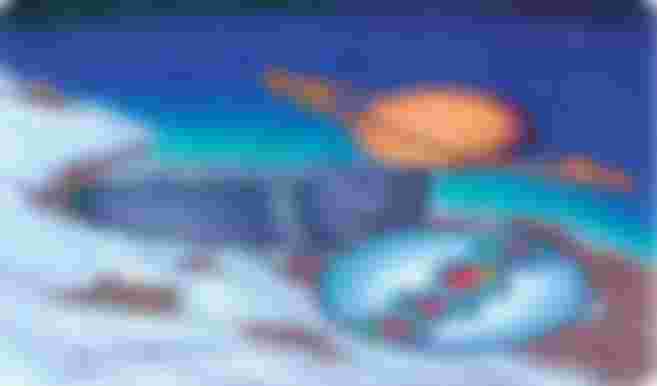1. Introduction
Biology literally means “the study of life”. Life Sciences attempts to untie the living things mysteries from the working of protein ‘machines’, to the growth of organism from a single cell to the majesty and intricacy of whole ecosystem. Questions about life sciences are as diverse and fascinating as life itself like; how a single cell knows to build up complex organism? How interpretation of genetic information takes place?
How the properties of organism are affected due to gene mutation? How ecosystem changes due to climate?
What can human genetic variation tell us about the history of human evolution and migration? Evolution is the change in heritable traits of biological populations over successive generations. Evolutionary processes give rise to diversity at every biological organization level. All life on earth shares a common ancestor known as the last universal ancestor. In the mid-19th century, Charles Darwin formulated the scientific theory of evolution by natural selection, while in the early 20th century the modern evolutionary synthesis integrated classical genetics with Darwin’s theory of evolution by natural selection through the discipline of population genetics. Evolution is a cornerstone of modern science, accepted as one of the most reliably established of all facts and theories of science, based on evidence not just from the biological sciences but also from anthropology, psychology, astrophysics, chemistry, geology, physics, mathematics, and other scientific disciplines, as well as behavioral and social sciences.
2. Theory of evolution on Earth
Today life diversity on earth is the result of evolution. On Earth life began at least 4 billion years ago and it has been evolving every year. In the beginning all living things on earth were single celled organism, after several years multicellular organism evolved after that diversity in life on earth increased day by day. Here in the figure shows the history of life on earth (Fig. 1).

DNA (deoxyribonucleic acid) is the double helix structure shown in Fig. 2. Its duplicate copies have coded information coiled up in almost all of the 100,000,000,000,000 (one hundred trillion) cells in your body. In human DNA has 46 segments; 23 segments received from father and 23 from mother. Each DNA contains exclusive information that determines what you look like, your personality and how your body cell is to function throughout your life.

If one cell whole DNA was uncoiled and stretched out then it would be six feet long. Its detailed structure could not be seen due to its thin structure even under electron microscope. If all the coded information from one cell of one person were printed on books then it would fill a library of four thousand books and if the whole body DNA were positioned continuously, it would extend from here to Moon more than 500,000 times. If one set of DNA from each individual who still lived were placed in a pile, the final pile would weigh less than an aspirin.
3. Generic information
Different Scientists gave different information about genetic evolution like; Carl Sagan who showed by using simple calculation that how one cell’s value of genetic information approximates four thousand books of written information while volume of each book would have 50 cubic inches (Sagan, 1977). 1014 cells are present in each adult individual. About 800 cubic miles have been worn from the Grand Canyon. According to that if each cell in one individual’s body was reduced to four thousand books then they would fill the Grand Canyon 98 times.
From earth the moon is 240,000 miles. If the human cell DNA were prolonged out and linked, it would be more than 7 feet long. If the entire DNA in one individual’s body were located back-to-back, it would enlarge to the moon 552,000 times.
The weight of DNA in human cell is 6.4 × 10−12 g and almost less than fifty billion individuals lived on earth, if one copy of DNA from living individual were taken it is enough to define the physical characteristics of all those inhabitants in microscopic aspect and would weigh only, which is less than the weight of 1 aspirin.
6.4 × 10-12 × 50 × 109 = 0.32 g
According to Hoyle and Wickramasinghe, biochemical systems are exceptionally composite, so much so that the possibility of their being shaped from side to side haphazard shuffling of simple organic molecules is remarkably small, to a position certainly where it is inertly different from zero (Hoyle and Wickramasinghe, 1999). Life cannot have a random beginning, like monkey’s troops thundering on typewriter could not be able to produce Shakespeare work. For the realistic cause entire visible universe is not vast adequate to hold the essential monkey hordes, essential typewriters, and surely the baskets for waste paper required for the deposition of wrong attempts. The same is true for the living matter.
The simple truth is not mentioned by Hoyle and Wickramasinghe that even a few correct words typed by monkey’s hordes would decompose long before a whole sentence of Shakespeare was completed. In the same way, a small number of correct amino acids sequences would decay long before a protein was completed, not to point out that thousands of proteins must be at their proper place in a living cell. At last the most composite condition of all is the occurrence of working DNA (Vogel, 2001). They also state that our intelligence must reflect a vastly superior intelligence, even the tremendous idealized limit of God. They also believe that life was created by some intelligence somewhere in outer space and latter was transported to the Earth. All point mutations that have been studied on the molecular level turn out to reduce the genetic information and not to increase it (Storz, 2002).
As Murray Eden reported that it is our contention that if ‘random’ is given a serious and crucial interpretation from a probabilistic opinion, then the randomness assumption is greatly improbable and a sufficient scientific theory of evolution has to wait for the finding and clarification of new natural laws like physical, physico-chemical, and biological (Eden, 1967). I. After clearing up the above to a scientific symposium, Hoyle said that evolution was similar with the possibility that “a tornado sweeping through a junk-yard might assemble a Boeing 747 from the materials therein.
According to Ohno’s likable term is junk DNA that traps and no doubt dispirited a generation of researchers from studying the huge amount of important “junk” DNA that did not code for proteins (Ohno, 1972). This study made an insightful point that if all the DNAs of human, mice and other organisms were useful then after so many mutations that build up in hundreds of millions of years then those species become extinct.
In different species non coding DNA differs more as compared to protein coding DNA. If we find a particular protein coding gene in human then we find nearly the same gene in mice and that rule just does not work for narrow elements. The biggest mistake in the history of molecular biology is the failure to recognize the importance of introns (Mattick, 2003).
In transcription regulation, replication, RNA processing, translation and protein degradation non coding RNAs play an important role. Recent studies show that non coding RNAs are more important and abundant as compared to those initially imagined. The term junk DNA which is used is the reflection of our ignorance, non gene sequence also has their regulatory role (Birney, 2012).
Fig. 3 shows that macroevolution would need a rising change in the complication of definite traits and organs while the microevolution is involved only in horizontal changes with no rising complications. Most of the creationists agree that natural selection occurs but it does not result in macroevolution.

Today, the most accepted theory of life on Earth is evolution, and there is a vast amount of evidence supporting this theory. However, this was not always the case. Evolution can be described as a change in species over time. Dinosaur fossils are significant evidence of evolution and of past life on Earth. Before taking into consideration that how life began, first of all we understand the term organic evolution. It is naturally occurring and beneficial change that produces rising and inheritable complication. If the offspring of one form of life had a different and improved set of vital organs then this is called macroevolution, but the microevolution does not increase the complexity. By one or more mutation only size, shape and color are altered (Taubes, 2009). Microevolution can be thought of as horizontal change, while macroevolution would involve vertical beneficial change in complexity. So the combination of microevolution and time will not produce macroevolution. Evolutionists have the same opinion that microevolution takes place. Since the start of history a minor change has been observed. But become aware of how frequently evolutionists give confirmation for microevolution to hold up macroevolution. It is macroevolution which requires new abilities and rising complication, resulting from new genetic information and is the center of the creation-evolution argument (Maher, 2012).



really nice article I really appreciate to you such a wonderful job , it's very important tropic in our modern civilization, volution is the change in heritable traits of biological populations over successive generations. we must be prevent this as soon as possible , visit my page my dear friend